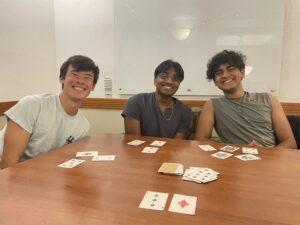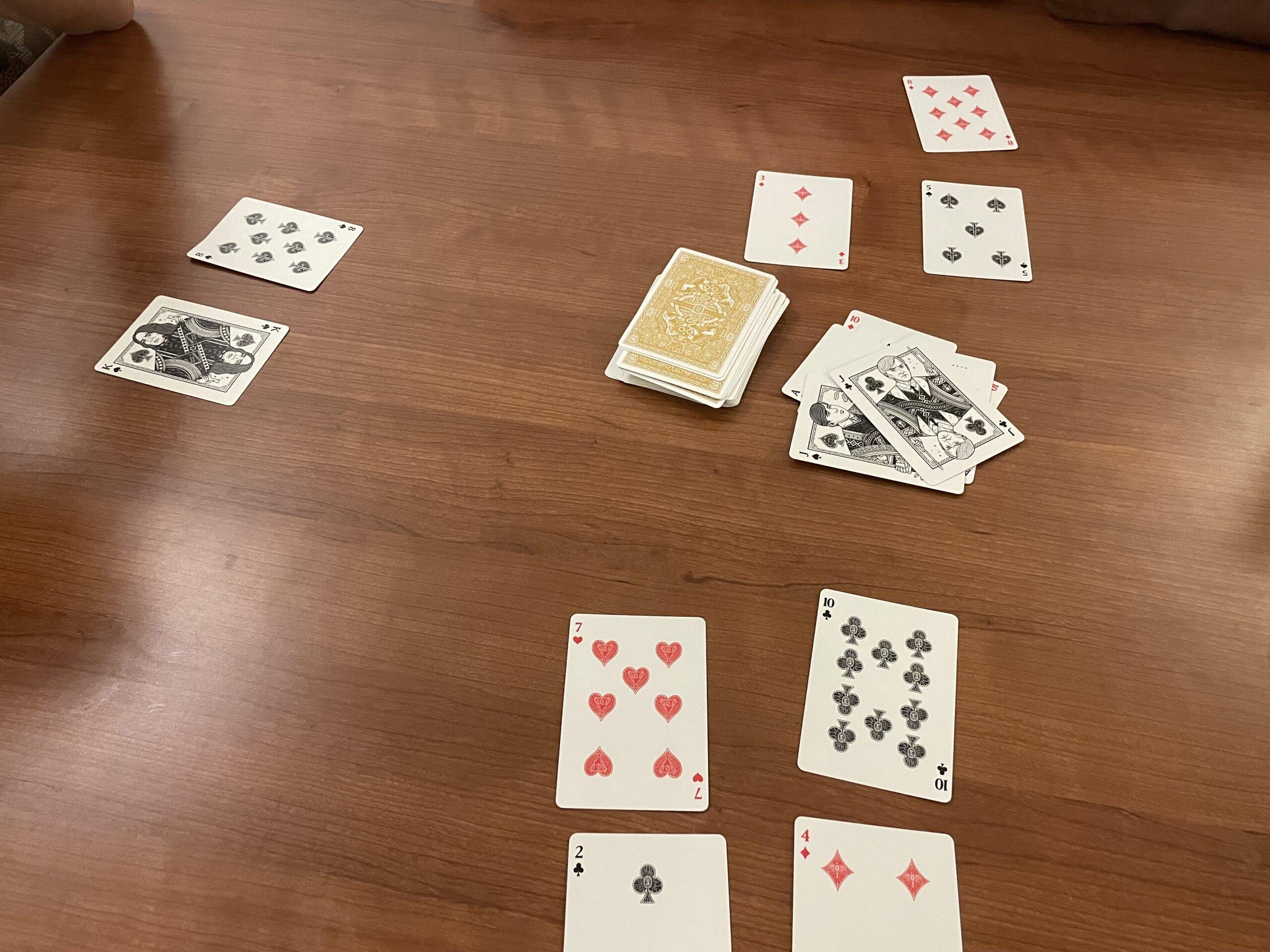The Cabo card game, first released in 2010, was designed and released by Melissa Limes and Mandy Henning. This game has always been a physical card game, first released with a specific deck of cards but has since then been adopted in different countries/versions of the game to be played with a standard deck of cards. The target audience for Cabo is anyone ages 8+ because it requires greater strategy which may be difficult for very young children, but it is also incredibly engaging even as individuals get older. I played 6-7 rounds with two other friends and a final round with three other friends. We used a standard deck of cards instead of the Cabo specific cards, but we played using the same rules!
How does the game compare and contrast with your team’s concept?
Each of our team members focused their competitive analysis on slightly different game mechanics that are related to our team’s concept. While playing the Cabo card game, I explored the mechanics of having hidden cards/information from other players, how that secrecy impacts trading, what each player’s turn looks like, and how judging happens. Through this exploration, I found that Cabo created far better incentives to initiate trades than our concept, and it validated the decisions we made for player procedures and how judging happens.
Hidden Information + Trades
While the theme and premise of Cabo is extremely different from our game, both have a mechanic of hidden information between players. The two games had their own repercussions if players revealed the cards they have, except Cabo’s repercussion was far worse than the mechanic we implemented in our game. The stronger negative outcomes created more incentive for players to lie and protect their own cards. This came up in one of our rounds where Friend A and I were both trying to convince Friend B to not sabotage our play since “our cards were definitely worse than theirs was!” That is definitely a question we have been facing with our concept about how to use game mechanics to create the right amount of conflict between players. Additionally, Cabo also had a mechanic where on rare occasions, players could see one of the cards of another player. The secrecy in Cabo also impacted how trades work. Our game has a negotiation mechanism where both players agree to trade, whereas in Cabo, only one player needs to agree for the trade to happen. The secrecy of every player’s cards truly impacts the trading mechanism, wanting to purposefully not “appear” to be winning so no one uses the trading mechanism to “sabotage” your play.

Player Procedures
Our game and the Cabo card game have a very similar player procedures. In both games, players go around the circle picking up new cards, then based on that information they can decide whether to keep it OR play the card (cabo) // trade the card (our game). I really enjoyed this mechanic and feel confident integrating it with our game.
How Judging Happens
In our rules, after we changed player procedures to have individuals pick up one card every round and trade, we then had to find a different solution for how judging would work. If one player is the designated judge from the beginning, they could get bored not participating and only watching everyone else pick up accessory cards/trading for multiple rounds. Therefore, we changed our mechanics to randomly insert one prompt card amongst our accessory cards, and judging begins when someone picks up the prompt card, giving everyone 1 final round to get new cards/trade now knowing the evaluation metric. Cabo has a very similar mechanism. Everyone plays the entire time and judging is triggered by someone calling “Cabo.” After that, each player has 1 final turn before revealing their cards. The randomness of when judging is triggered was incredibly engaging, adding a layer of strategy to end each round in the best possible place. Additionally, when playing Cabo, my friends and I actually tested this theory by playing 2 rounds where after someone calls “Cabo,” judging happens immediately instead of everyone having a final turn. We found that this removed complexity from our game since that final round creates an opportunity for individuals to improve their own score and sabotage other player’s scores, which validated the decision we had made for our own game. Until we played both versions of how judging is triggered, I did not realize the power and fun of trying to sabotage other players. Sabotage was a game mechanic that we had briefly discussed for our own concept, but never flushed out. I would be curious to see how we could integrate this mechanic into our own concept!





